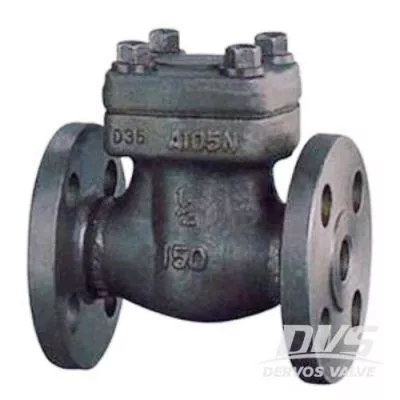Common forged valve pressure test methods and considerations-part two
(1) Under normal circumstances, the forged valve is not tested for strength, but the repaired forged valve body and forged valve bonnet or corroded forged valve body and valve bonnet shall be tested for strength. For safety valves, the constant pressure and return pressure and other tests shall comply with the specifications and relevant regulations.
(2) Strength and tightness tests shall be performed prior to forged valve installation. For low pressure forged valve, we should make a spot check of 20%. If it is not qualified, then a 100% inspection should be made for the low pressure forged valves; for medium and high pressure forged valves, we should make a 100% inspection of them.
(3) When testing, the forged valve should be installed in a direction that is easy for valve inspection.
(4) Forged valves in the form of welding connection may be pressure tested with a tapered seal or O-ring seal when the test is not possible with the terminally plate.
(5) The forged valve air should be excluded as much as possible during the hydraulic test.
(6) The pressure should be gradually increased during the test, and it is not allowed to pressurize sharply and suddenly.
(7) The duration of the strength test and the tightness test is generally 2 to 3 mins, and for the important and special forged valves, the test time should last for 5 mins. The test time of the small diameter forged valve can be correspondingly shorter, and the test time of the large diameter valve can be correspondingly longer. In the course of the test, the test time can be extended if there is any doubt. During the strength test, the forged valve body and forged valve bonnet are not allowed to sweat or leak. For common forged valves, the sealing test is generally only performed once, and for the safety forged valve, high pressure forged valve and other important forged valves, the sealing test needs to be carried out twice. During the test, a slight amount of leakage is allowed for low pressure, large diameter unimportant forged valves and forged valves that are allowed to leak. Since general-purpose forged valves, power station forged valves, marine forged valves, and other forged valves have different requirements, leakage requirements should be implemented in accordance with relevant regulations.
(8) The forged throttle valve shall not be tested for the tightness or sealing of the closure parts, but shall be tested for strength and for the sealability at the filler and gasket.
(9) During the pressure test, the forged valve closing force only allows one person's normal physical strength to close; it must not be applied by means of a lever or the like (except the torque wrench) to increase the power. When the diameter of the hand wheel is greater than 320 mm, the two people are allowed to close the valve together.
(10) For forged valves with upper seals, the packing should be taken out for sealing test. After sealing the upper part, check whether there is leakage. When the gas is used for testing, fill the stuffing box with water and check it. When doing the tightness test of the filler, the upper seal is not allowed to be in a tight position.
(11) When a forged valve with a drive device is tested for its tightness, the drive unit is used to close the forged valve to perform a tightness test. For manual actuating devices, the sealing test of the forged valve should also be carried out with a dynamic shutdown.
(12) After the strength test and the sealing test of the main forged valve, the bypass forged valve installed on the main forged valve shall be tested for strength and tightness also; when the main forged valve closing member is opened, the forged bypass valve shall also be opened.
(13) When testing the strength of cast iron forged valves, tap the forged valve body and bonnet with a copper hammer to check whether there is leakage.
(14) When the forged valve is tested, except that the forged plug valve is specified to allow the sealing surface to be oiled, other forged valves are not allowed to be oiled on the sealing surface for testing.
(15) When the forged valve is pressure tested, the compression force of the blind plate to the forged valve should not be too large, so as to avoid deformation of the forged valve and affect the test effect (the cast iron forged valve will be damaged if it is pressed too tightly).
(16) After the pressure test of the forged valve is completed, the water in the forged valve should be removed and cleaned in time, and the test record should be made.
